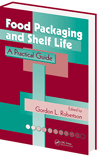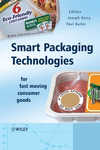Mark Breen
Marketing Manager
Dover Flexo Electronics, Inc.
20 years with the company
(603) 332-6150
www.dfe.com
Q: What’s new in the world of tension control?
A: Most of the advancements are coming in the form of electronic features added to digital control software and firmware. For instance, specific to controller tuning for improved tension control and web-process consistency, the SteadyWeb5 Tension Controller includes a P.I.D. tuning feature, TuneView, that allows the machine operator to view a time-lapse line graph of fluctuations in tension on the unit’s graphic user display. The operator may change P.I.D. values on the fly to fine-tune the process and achieve a flatter system response.
Compared to earlier generations of analog controllers, a benefit of the newer digital controllers with graphic user interfaces is that the graphic interface helps production technicians get machine operators trained and up to speed on tension control in less time. The graphic display with illustrated prompts and color graphics simplifies the tasks of initial setup and configuration.
On the pneumatic brake side of the tension control industry, brake squeal has been a problem for some flexible packaging printers and converters for decades. Dover Flexo Electronics has spent years trying to address the problem for its brake customers. We were recently granted a patent on the Silencer friction pad technology, which has proven 100 percent successful in eliminating brake squeal since the introduction of the technology in 2011.
Q: Aside from creating better overall film, what are some other benefits to having an effective tension control system in place?
A: Reduction in production film waste is one benefit of an effective tension control system. By providing a reliable means of measuring and controlling web, we have been able to help our customers keep their operating costs down and the quality of their finished films up.
When a film converter or printer experiences quality issues that they suspect may be related to poor tension control, they may ask us for a free analysis of potential trouble spots on their web machinery. Loss of color-to-color registration while running at speed, splicing or changing speed, inconsistent repeat length and slack web, which can cause web breaks and wrap-ups around driven rolls, are perhaps the most obvious consequences of inadequate tension control on a web press.
Q: There seems to be a consensus that tension control equipment has reached a state of maturity. Do you agree with this? If yes, what’s needed to keep this sector evolving?
A: Yes. The tension control equipment market has reached a state of maturity where change is now occurring incrementally.
In line with the environmental movement that’s driving packaging solutions that leave a smaller carbon footprint, we see the trend toward thinner flexible substrates continuing. We also expect the efforts of materials processors, converters and printers to lower production waste to continue.
As a manufacturer of electronic controls, we are deploying advanced digital processing technology. Because of smaller ICs (integrated circuits) with larger processing density, we also see computing power concentrating into smaller packages just as we see in the consumer electronics world.
This CPU compression translates into more features, smarter devices and easier-to-use interfaces in upcoming generations of the sensing, display, measurement and control equipment that machine designers build into their web presses and converting machinery. So, newer, faster, waste-cutting production devices for the flexible packaging industry will be a continuing trend from tension control manufacturers too.
Q: What’s something that a lot of converters might not know about tension control, but should know about it?
A: A thorough review of your converting application before ordering tension components can eliminate most errors before they happen. Some customers don’t understand why we request so much detailed information before quoting the tension equipment for a particular process. If our applications engineers understand the process requirements and machinery capabilities up front, we can recommend the most appropriate combination of transducers, controllers/indicators and pneumatic brakes. If the information provided to us is accurate, we have few problems after installation.
We have designed our equipment to be user-friendly and simple to operate. Simplicity minimizes the possibility of confusion and error. For instance, most of our amplifiers and controllers include Quik-Cal, a push-button zero and calibration feature that eliminates the need for a plant technician to make potentiometer adjustments. This makes the calibration procedure fast and easy.
Q: Is there anything else you’d care to share about tension control?
A: Keep the product selection process simple by letting your tension control supplier handle any complex sizing and configuration issues. We have customers that end up buying tension controllers after trying to design their own because it can become more complicated than it looks. Some tension control equipment suppliers will listen carefully to customer challenges, concerns and suggestions and then implement the suggestions into new product designs.









